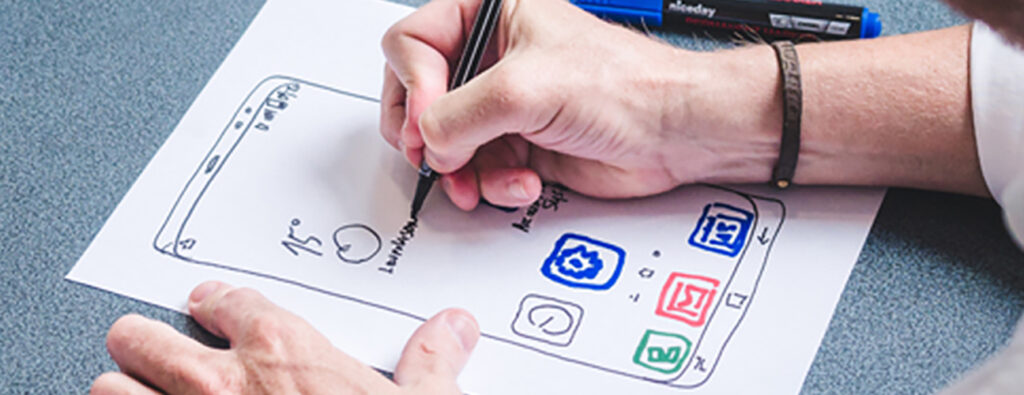The Basic Tenets of Visual Design for UX

Let’s take a look at some of the tenets of visual design for UX, guided by empathy and purpose-driven design.
Empathy
Place yourself in the shoes of your users, understanding their aspirations, needs, and challenges. Only through this compassionate connection can we create designs that resonate deeply and cater to their desires.
Purpose
Discover the essence of your design challenge. Aligning with the core purpose empowers us to channel our energies into crafting experiences that serve the needs of our users with unwavering conviction.
Research and User Testing
This is where we uncover the hidden desires and pain points of our users. We embrace their stories, their struggles, and their dreams. Armed with this profound understanding, we sculpt the visual landscape, painting strokes of empathy and purpose across every pixel.
Collaboration
Foster an environment where diverse voices are welcomed and valued. Together, we co-create and breathe life into designs that reflect the rich tapestry of human experiences, transcending boundaries and embracing inclusivity.
Here are 10 tenets of Visual Design for UX:
- Consistency:
Consistency refers to maintaining a unified visual language throughout the user interface. Consistent use of colors, typography, spacing, and layout elements helps users understand and navigate the interface more easily. - Contrast:
Contrast involves using differences in color, size, and visual weight to highlight important elements and create visual hierarchy. By employing contrast effectively, you can draw attention to key information and make the interface more visually engaging. - Color:
Color is a powerful tool in visual design, and it can evoke emotions, communicate meaning, and enhance usability. Choosing an appropriate color scheme that aligns with the brand and creates a harmonious visual experience is crucial for UX. - Typography:
Typography plays a significant role in UX as it affects readability and overall visual appeal. Selecting appropriate fonts, font sizes, line spacing, and hierarchy can enhance the legibility of content and improve the user’s reading experience. - White space:
White space, also known as negative space, is the area between design elements. Properly utilizing white space can provide breathing room for content, improve clarity, and make the interface more visually balanced and inviting. - Simplicity:
Simplicity in visual design refers to eliminating unnecessary elements and focusing on the core message or functionality. A clean and minimalist design reduces cognitive load, improves comprehension, and allows users to navigate and interact with ease. - Visual hierarchy:
Visual hierarchy is the arrangement and prioritization of elements based on their importance. By using size, color, contrast, and placement, you can guide users’ attention and help them understand the relative significance of different interface elements. - Grid systems:
Grid systems provide a framework for organizing and aligning elements within a layout. Using grids ensures visual consistency, improves readability, and helps maintain a structured and balanced design. - Imagery and icons:
Thoughtful use of imagery and icons can enhance the user experience by conveying information quickly and intuitively. They should be relevant, visually appealing, and consistent with the overall design language. - Feedback and responsiveness:
Visual design should provide clear feedback to users, indicating the system’s response to their actions. Animations, microinteractions, and visual cues can help users understand the state of the interface, increase engagement, and create a sense of responsiveness.
These tenets collectively contribute to a visually pleasing, usable, and intuitive user experience by creating a cohesive and engaging interface that communicates effectively with the users.
*The preceding information comes from my personal / professional experience and research notes. The text is intended to help me, and anyone who comes across it, understand some of the complexities of design leadership and practice. I am liable to change and update these notes as my journey continues. They are not uploaded on a regular schedule, and often come all at once, as I post and update when I find spare moments. A lot of this knowledge is widely available through experience and education, but this is an attempt to centralize and categorize it for easy reference.
Photo Credit: Photo by Fabian Wiktor
